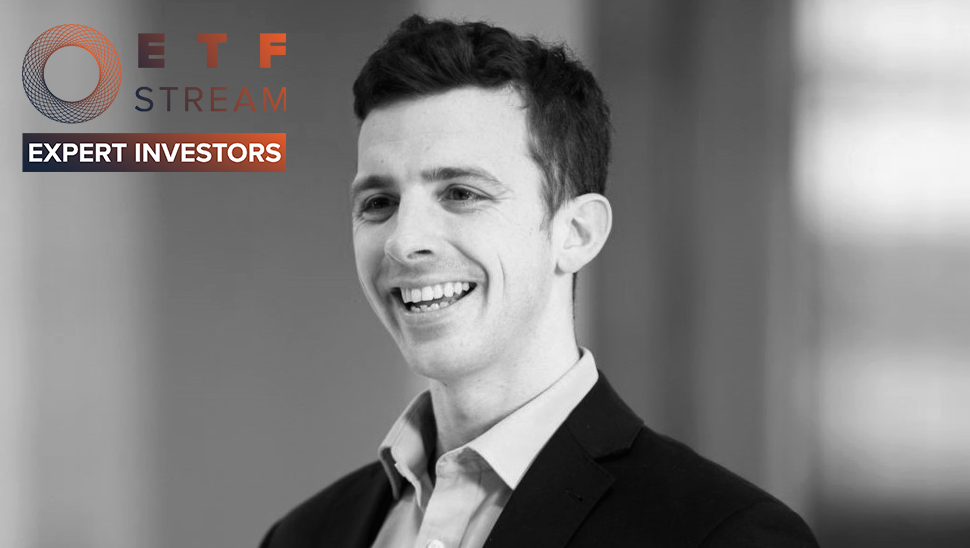brought to you by
ETF Stream
where on a fortnightly basis we interview the key individuals from across the fund selection and research space about the ETF ecosystem.
Fund selection plays a crucial role in portfolio construction. Once the asset allocation decision has been made, these individuals need to decide how they want to be exposed, be it through a mutual fund, investment trust or ETF.
Over the years, ETFs have become an increasingly important part of any investor’s toolkit. This series will show how the key players across the fund selection space use ETFs in their portfolios while asking what more can be done by the ETF providers to help with this increasing adoption.
Next in the hot seat is Matt Brennan, head of passive portfolios at AJ Bell. Brennan joined the firm in 2017 from Brown Shipley where he held a number of roles over a three-year period most recently as senior fund manager. Brennan was also named in ETF Stream's Industry 30 in 2019, which recognises the 30 most influential experts across the European ETF industry.
How much of your portfolio is made-up of ETFs/index funds?
At AJ Bell, I head up our passive team, as such 100% of the funds and portfolios my team are responsible for use rules-based strategies, with over 90% specifically invested in ETFs.
When did you start investing in ETFs?
Although I have used ETFs in various jobs over the years, the focus on predominantly using ETFs began when I joined AJ Bell in 2017. The AJ Bell Investments mission statement to offer simple, transparent, low-cost solutions. ETFs present the best perfect vehicle to help us achieve these goals.
We especially like the single share class structure of the vehicle, given our large retail audience (either directly or through the adviser market).
As we are newer asset management, we do not have the legacy of being tied to index funds, like many other passive multi-asset providers.
Which asset classes do you tend to invest in through ETFs?
We take a top-down approach to building our portfolios, with the golden rule that we only invest in asset classes that we understand, are well established and offer some sort of pattern of returns through history.
This means we avoid any illiquid or unlisted asset classes, or any strategy that relies on complex derivative strategies.
This means we believe all asset classes we use are suitable for ETFs. That being said, we do take special care within specialist areas such as high yield bonds and emerging market debt when selecting the vehicles we use.
The common argument that some asset classes are more suitable for active management have in my view been quashed over the last few years, as active managers have failed to protect on the downside (usually the main defence).
As such we focus on liquid, diversified, low-cost investments, to maximise returns in the longer term.
The growth in ETF offerings also means that just because you are using ‘passive’ investments, you can still add value through the asset allocation process.
For example, we have had long term holdings in technology and health care ETFs, both have helped during the COVID crisis, negating the need for an active manager to do this for you.
Which areas would you avoid?
We think it is unfortunate that most exchange-listed vehicles are referred to as ETFs. The recent issues seen within oil ETPs recently highlights this.
As such we are big believers in the UCITS regime, and will only use UCITS ETFs. We also exclude any leveraged ETFs that are allowed within this framework.
European ETF issuers must follow US lead in calling for clarity on ETP classifications
We are happy to invest in mid-cap stocks such as a FTSE 250 ETF, but we stay away from small cap, where spreads are higher and the index is often highly concentrated.
We have a set of income funds where the majority of investments are ETFs, however, it is important to avoid the yield weighted strategies that often push you into value traps, as such we prefer smart beta income strategies.
What is your methodology for selecting ETFs?
The ETF industry in Europe is still in its relative infancy, and although an established player, we have been going through a learning curve, understanding how different products have worked in different environments.
Initially, our analysis was mainly quantitative, focusing on the main areas such as tracking error, spreads, costs, AUM and all the usual suspects.
However, our approach over the last couple of years has evolved to a blend of both quantitative and qualitative research.
The numbers give us a good indication of the past, but give us little information on what may happen in the future.
As such, we focus on areas that we feel are predictive of the future returns of the ETF. For example, we look at areas such as securities lending programmes, the commitment of the ETF manager to its products, the size and technology of its team, its capital markets team, and perhaps most importantly the willingness to engage with us in any issues we face as a user of the products.
Our quant analysis allows us to identify a shortlist of products and our ‘active-style’ research helps us to choose the product.
Do you have an ETF provider preference?
The reason we like ETFs so much is the natural competition in the market place. We think it is important to build relationships with all the providers, especially given they all have areas of specialism.
We know we can rely on the likes of Blackrock, Vanguard, State Street and DWS for large, liquid ETFs. On the other hand the likes of Invesco, Lyxor and JP Morgan have specialisms that we think make them well placed in certain asset classes.
What ETF products would you like to see more of?
Perhaps the biggest hurdle we face as a fund using almost exclusively ETFs is within the alternatives space.
This is a challenge using listed equities and bonds (we don’t like derivatives!). However, we have seen some good innovation in the space, such as the iShares UK Target Real Estate ETF, using a blend of REITs and index-linked bonds to recreate a return profile similar to an active property fund, but without the liquidity risk.
We would be interested to see if further innovation could be made in the alternative space, especially when it comes to areas such as infrastructure.
This will be the final piece in the jigsaw to allow a fully ETF implemented multi asset offering.
Are there any areas ETF issuers could improve?
Even as an experienced user of ETFs, I find the trading landscape hard to navigate and to fully understand how it all works.
Ideally, we would like to see more volume on exchange and a listed iNAV for all products where possible.
This would remove a big barrier to ETF usage, as index funds are still easier to click and trade, knowing you will get good execution.
At the moment, I still feel as a buyer I have to rely on the market working efficiently and price competition leading to best execution, which sounds good in practice, but is sometimes more complex in reality.
To read the previous edition of Expert Investors with Gilles Prince, CIO of Edmond De Rothschild (Suisse), click here.
Sign up to ETF Stream’s weekly email here



